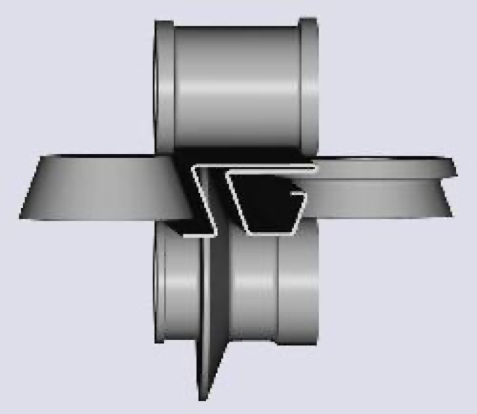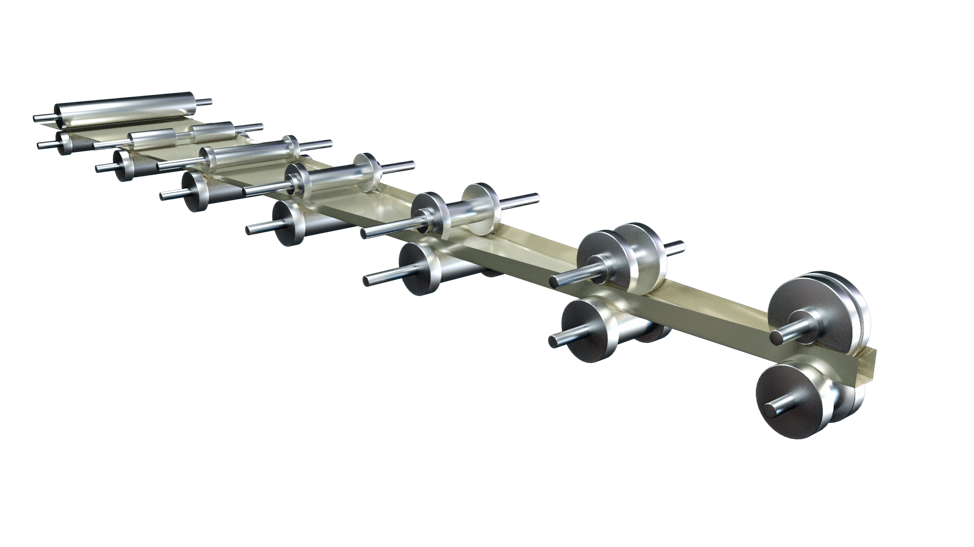American Steel Processor Spotlight: Roll Forming
Roll forming plays a critical role in the steel manufacturing industry by shaping steel products in a way that can significantly impact their strength, durability, and performance. As you look around, you’ll notice that every object has a shape that distinguishes it from others, and this is equally true for steel products. From the curves and angles of a car frame to the outline and contours of a building’s roof, this process plays a vital role in shaping our world.
That’s why we’re putting roll forming in the spotlight and showcasing how National Material Company (NMC) leads the industry in this process.
Roll forming is a manufacturing process that is commonly used in the steel industry to shape sheet metal into various cross-section profiles. In a nutshell, it’s a continuous process that involves passing a metal strip or sheet through a series of rollers. This method is highly precise, and the rollers are designed and/or calibrated to gradually shape the material – making complex shapes possible with tight tolerances and consistent quality.
How Roll Forming Changed the Steel Industry
Its origin can be traced back to the late 19th century when the first roll forming machines were developed in Europe and the United States. These early machines were used primarily for producing simple shapes, such as roofing panels and gutters, and were powered by manual or hydraulic systems.
Prior to the invention of this process, shaping metal into various forms was a labor-intensive process that required skilled craftsmen to forge, cast, or fabricate the material by hand. Some of the most common processes used are forging, casting, extrusion, machining, and stamping.
While these processes are still used today for certain applications, roll forming offered several advantages over these traditional methods, including faster production times, lower labor costs, and the ability to produce more complex shapes and profiles. By feeding a continuous strip of metal through a series of rollers, roll forming machines could produce long, uniform sections of material with a high degree of accuracy and repeatability.
Roll Forming Process
Determining the specifications for the profile – in addition to form and function – is the initial stage of the production process. This includes the material type, thickness, width, length, and the desired cross-sectional shape.
The profile is then sketched out in 2D, or 3D using CAD (computer-aided design) software and should meet the specific requirements – including any tolerances or other design constraints. A flat pattern (two-dimensional representation) is then created and shows how the profile will look when it is unrolled into a flat sheet.
The next step is to add the necessary tooling to the forming machine. This includes the rollers, guides, and other components that are required to produce the profile. Once the profile design is complete, it is simulated using roll-forming software to ensure that the design is feasible and that the tooling is correct. Once the design is finalized, a prototype of the profile is produced and tested to ensure […]


